-
Lockheed Martin shows tiny surveillance UAV
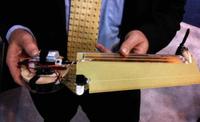
The Samarai UAV is sixteen inches long and weighs less than half a pound; while flying, it can stream live video from a camera that rotated around its center providing a 360 degree view without a gimbal; it can be carried in a backpack and launchedt from the ground or like a boomerang
-
-
Cheap radiation detector made of PET resin developed
Researchers develop a revolutionary radiation-sensitive plastic with a performance superior to plastic scintillators used for measuring radiation; the discovery will enable a major reduction in production costs — a step toward an inexpensive radiation detector available to everyone
-
-
Day of "solar" soldiers nears

Researches develop wearable light-weight solar panels which will allow soldiers to generate power in the field and reduce the need for batteries for their electronic devices; they will also establish a power supply that keeps electronic devices operational throughout the duration of missions
-
-
Portable, super-high-resolution 3-D imaging
A simple new imaging system could help manufacturers inspect their products, forensics experts identify weapons, and doctors identify cancers.
-
-
Aussies to clone explosives sniffer dogs
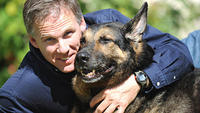
Two Aussie dog-breeding companies will collaborate with South Korean scientists on cloning explosives and drug sniffer dogs; the first batch of ten dogs will go into service in 2013; the Australians cloned dogs would be made from tissue samples taken from a German shepherd called Hassan von Gruntal, who died in 2001; cloned sniffer dogs have already been used in South Korea and the United States
-
-
New material dramatically increases explosive force of weapons

A revolutionary material that will replace steel in warhead casings will bring added lethality and increase the likelihood of a hit on an enemy target; by combining several metals with standard manufacturing techniques, High-Density Reactive Material (HDRM) has the potential dramatically to increase the explosive impact of most weapons with little or no compromise in strength or design
-
-
Reversing metabolism to make biofuels at breakneck pace
Engineers reverse E. coli metabolism for speedy production of fuels, chemicals; a Rice University’s team reversed one of the most efficient of all metabolic pathways — the beta oxidation cycle — to engineer bacteria that produce biofuel at a breakneck pace
-
-
Self-assembled "micro-robots" designed
Tiny micro-robots — just half a millimeter wide — assemble themselves into star shapes when an alternating magnetic field is applied; the robots can pick up, transport, and put down other non-magnetic particles — potentially enabling fabrication of precisely designed functional materials in ways not currently possible
-
-
Storing CO2 underground to extract electricity
A team of scientists, led by the Berkeley Lab, hopes to become the first in the world to produce electricity from the Earth’s heat using CO2; They also want permanently to store some of the CO2 underground, where it can not contribute to climate change
-
-
Undergraduate student overcomes major hurdle to invisibility cloak
An undergraduate student has overcome a major hurdle in the development of invisibility cloaks by adding an optical device into their design which not only remains invisible itself, but also has the ability to slow down light; the innovation open up the possibility for a potential invisibility cloak wearer to move around amongst ever-changing backgrounds of a variety of colors
-
-
Towing icebergs to provide fresh water for parched regions

A third of the world’s population — more than two billion people — lives without access to clean drinking water, and studies show that the situation will only get worse; a French innovator has an idea: towing icebergs from the Greenland and Antarctica to regions most in need of fresh water; a computer simulation shows this solution to be viable and affordable
-
-
Solar-based method to provide safe water
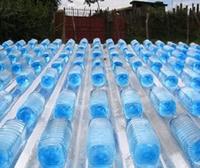
A revolutionary low-cost technique that uses sunshine to provide safe drinking water; solar disinfection (SODIS) of drinking water is an effective way of preventing water-borne diseases such as cholera, dysentery or polio — especially important in developing countries, where safe drinking water is often a precious rarity
-
-
U Maryland students design record-breaking helicopter
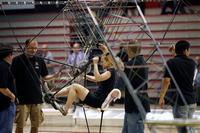
University of Maryland students flew past a world record after their human-powered helicopter hovered more than twelve seconds inside a campus building; the team’s goal is to win the Sikorsky Prize, a $250,000 reward given by the American Helicopter Society; in order to win, a human-powered helicopter must fly at least thirty seconds, hover at least three meters above ground, and not drift outside a ten-meter square
-
-
Beachball-like observation UAV developed
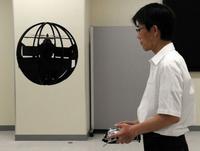
A beach ball-size drone can fly down narrow alleys, hover on the spot, take off vertically, bounce along the ground like a soccer ball — all the time transmitting live images from a video camera; it can travel above traffic or spy on a target through a window — and can also be used in search and rescue in disaster zones, where it could fly through buildings and even up and down stairways
-
-
Innovative biosensor for rapid virus field tests
Relying on a novel DNA-based bio-chemo-physical conversion method, a new bio-detection device is able to detect harmful bacteria, such as E. coli, salmonella, and staphylococcus, on site, within thirty minutes; it can be adapted to cover such deadly viruses as SARS, H5N1 flu, and swine flu viruses; it can also be designed to monitor possible biological attack from anthrax, smallpox, cholera, and more
-
More headlines
The long view
Autonomous Vehicle Technology Vulnerable to Road Object Spoofing and Vanishing Attacks
Researchers have demonstrated the potentially hazardous vulnerabilities associated with the technology called LiDAR, or Light Detection and Ranging, many autonomous vehicles use to navigate streets, roads and highways. The researchers have shown how to use lasers to fool LiDAR into “seeing” objects that are not present and missing those that are – deficiencies that can cause unwarranted and unsafe braking or collisions.
Tantalizing Method to Study Cyberdeterrence
Tantalus is unlike most war games because it is experimental instead of experiential — the immersive game differs by overlapping scientific rigor and quantitative assessment methods with the experimental sciences, and experimental war gaming provides insightful data for real-world cyberattacks.
Prototype Self-Service Screening System Unveiled
TSA and DHS S&T unveiled a prototype checkpoint technology, the self-service screening system, at Harry Reid International Airport (LAS) in Las Vegas, NV. The aim is to provide a near self-sufficient passenger screening process while enabling passengers to directly receive on-person alarm information and allow for the passenger self-resolution of those alarms.
Falling Space Debris: How High Is the Risk I'll Get Hit?
An International Space Station battery fell back to Earth and, luckily, splashed down harmlessly in the Atlantic. Should we have worried? Space debris reenters our atmosphere every week.
Testing Cutting-Edge Counter-Drone Technology
Drones have many positive applications, bad actors can use them for nefarious purposes. Two recent field demonstrations brought government, academia, and industry together to evaluate innovative counter-unmanned aircraft systems.
Strengthening the Grid’s ‘Backbone’ with Hydropower
Argonne-led studies investigate how hydropower could help add more clean energy to the grid, how it generates value as grids add more renewable energy, and how liner technology can improve hydropower efficiency.
The Tech Apocalypse Panic is Driven by AI Boosters, Military Tacticians, and Movies
From popular films like a War Games or The Terminator to a U.S. State Department-commissioned report on the security risk of weaponized AI, there has been a tremendous amount of hand wringing and nervousness about how so-called artificial intelligence might end up destroying the world. There is one easy way to avoid a lot of this and prevent a self-inflicted doomsday: don’t give computers the capability to launch devastating weapons.
The Tech Apocalypse Panic is Driven by AI Boosters, Military Tacticians, and Movies
From popular films like a War Games or The Terminator to a U.S. State Department-commissioned report on the security risk of weaponized AI, there has been a tremendous amount of hand wringing and nervousness about how so-called artificial intelligence might end up destroying the world. There is one easy way to avoid a lot of this and prevent a self-inflicted doomsday: don’t give computers the capability to launch devastating weapons.
